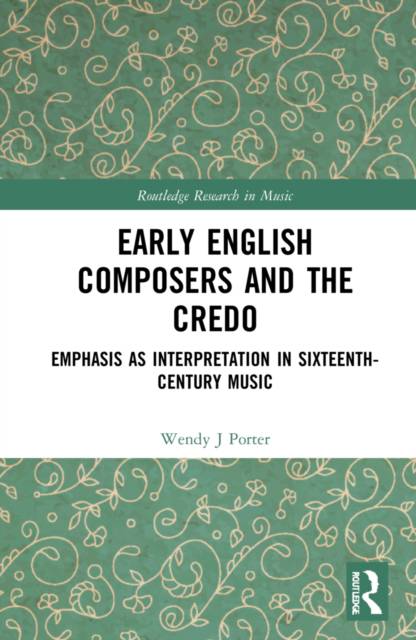
- Afhalen na 1 uur in een winkel met voorraad
- Gratis thuislevering in België vanaf € 30
- Ruim aanbod met 7 miljoen producten
- Afhalen na 1 uur in een winkel met voorraad
- Gratis thuislevering in België vanaf € 30
- Ruim aanbod met 7 miljoen producten
Early English Composers and the Credo
Emphasis as Interpretation in Sixteenth-Century Music
Wendy J PorterOmschrijving
This book develops an innovative approach for understanding the relationship between music and words in the works of five major composers of the English Renaissance: John Taverner, Christopher Tye, John Sheppard, Thomas Tallis, and William Byrd. Focusing on these composers' settings of the Latin Credo, the author shows how musical and linguistic emphasis can be used to understand the composers' theological interpretations of the text. By combining markedness theory with style analysis, this study demonstrates that the composers used their musical skills to not only create beautiful music but also raise certain elements of the text to the foreground of perception and relegate others to supporting roles, inviting listeners to experience the familiar words of the liturgy in unique ways.
Providing new insights into the changing musical and religious world of the sixteenth century, this book is relevant to anyone researching music or religion in early modern England, while offering a flexible and widely adaptable tool for the analysis of musical-textual relationships.Specificaties
Betrokkenen
- Auteur(s):
- Uitgeverij:
Inhoud
- Aantal bladzijden:
- 270
- Taal:
- Engels
- Reeks:
Eigenschappen
- Productcode (EAN):
- 9781032047584
- Verschijningsdatum:
- 24/03/2022
- Uitvoering:
- Hardcover
- Formaat:
- Genaaid
- Afmetingen:
- 152 mm x 229 mm
- Gewicht:
- 557 g

Alleen bij Standaard Boekhandel
Beoordelingen
We publiceren alleen reviews die voldoen aan de voorwaarden voor reviews. Bekijk onze voorwaarden voor reviews.











